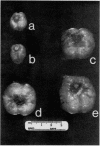Abstract
Previous studies have suggested that dihydrotestosterone accumulation in the prostate may be involved in the pathogenesis of prostatic hyperplasia in man and dog. However, the fact that the administration of 10 mg dihydrotestosterone/d to castrated, mongrel dogs (0.5 mg/kg body wt) causes little growth in the prostate, whereas identical doses of 3α- androstanediol regularly induce prostatic hyperplasia (> 14 g weight) has raised the possibility that the dihydrotestosterone accumulation may be the result rather than the cause of the pathology. To investigate the mechanism of this phenomenon, we measured the levels of dihydrotestosterone and 3α-androstanediol in prostates from 75 dogs. In both naturally occurring and 3α-androstanediol-induced prostatic hyperplasia, the levels of dihydrotestosterone were high (>5 ng/g), whereas in immature glands and glands from dihydrotestosterone-treated animals, levels were similar (2.1 and 2.6 ng/g, respectively). 3α-Androstanediol levels were no different in animals treated with dihydrotestosterone or 3α-androstanediol.
Therefore, because exogenous 3α-androstanediol is a better precursor of prostatic dihydrotestosterone than exogenous dihydrotestosterone itself, the effects of treatment with larger doses (2.5 mg/kg per d) of dihydrotestosterone and 3α-androstanediol for 12 wk were examined. In these amounts, dihydrotestosterone was as effective as 3α-androstanediol in inducing the development of prostatic hyperplasia and in elevating prostatic dihydrotestosterone concentration.
Because dihydrotestosterone accumulates in spontaneous prostatic hyperplasia, because the administration of sufficient amounts of dihydrotestosterone to the castrated dog can induce the development of prostatic hyperplasia, and because 3α-androstanediol induces the development of hyperplasia via conversion to dihydrotestosterone, we conclude that accumulation of dihydrotestosterone is the cause of canine prostatic hyperplasia.
Full text
PDF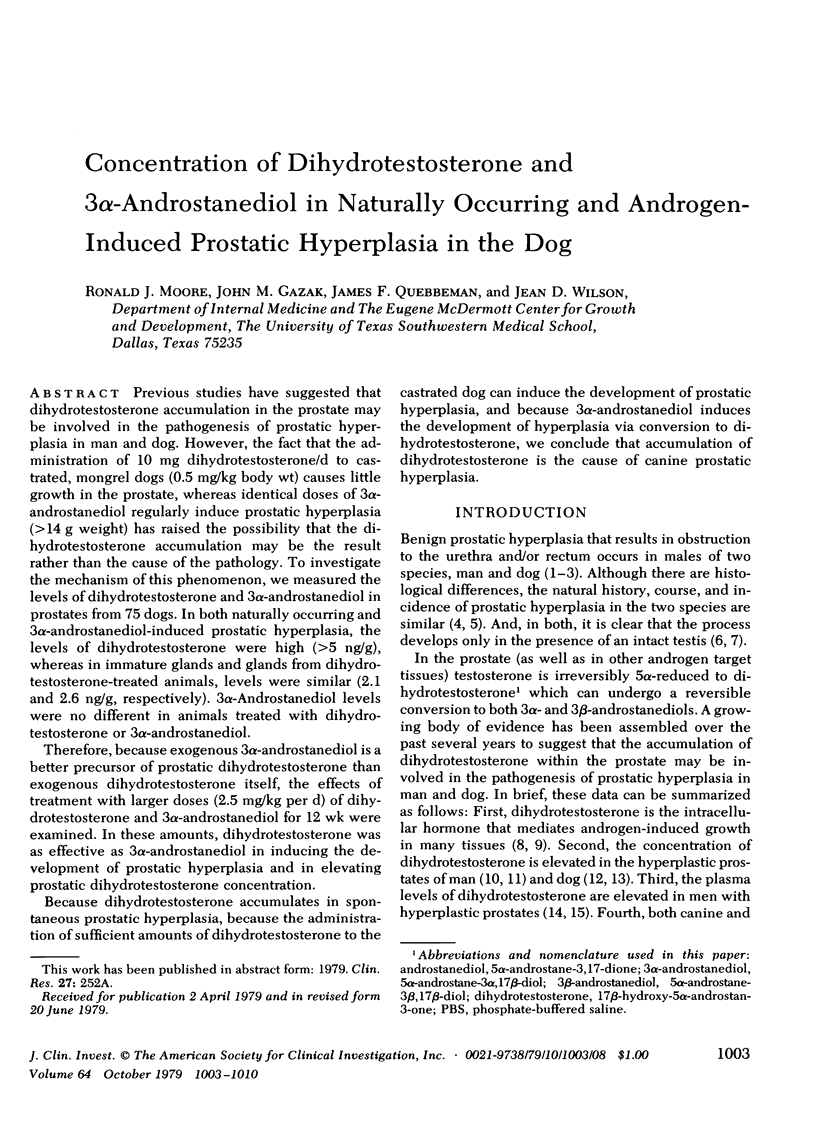
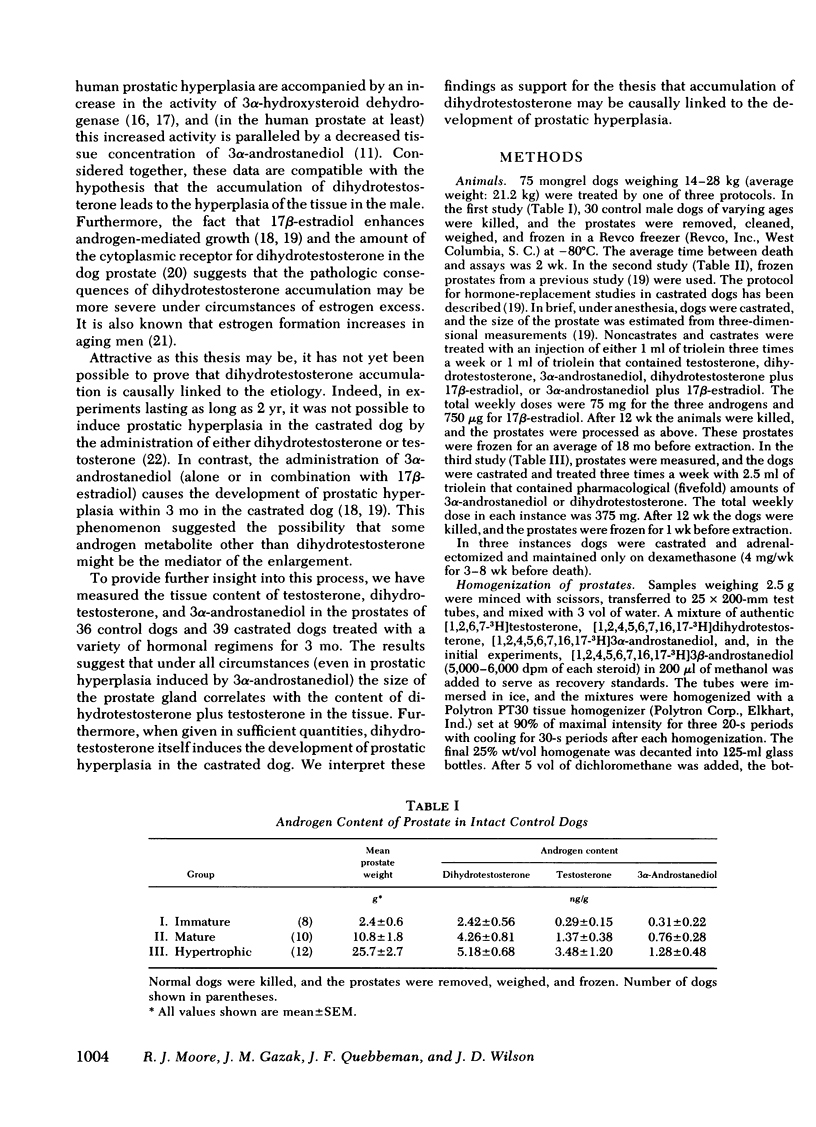
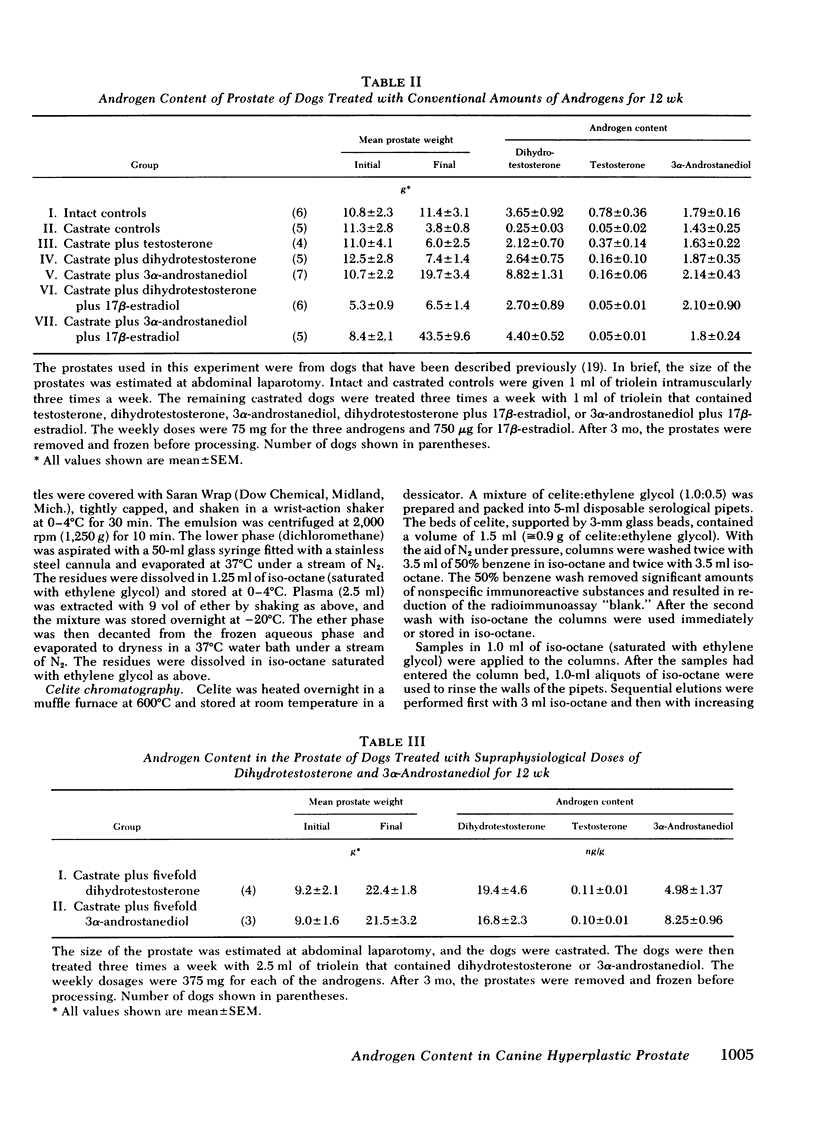
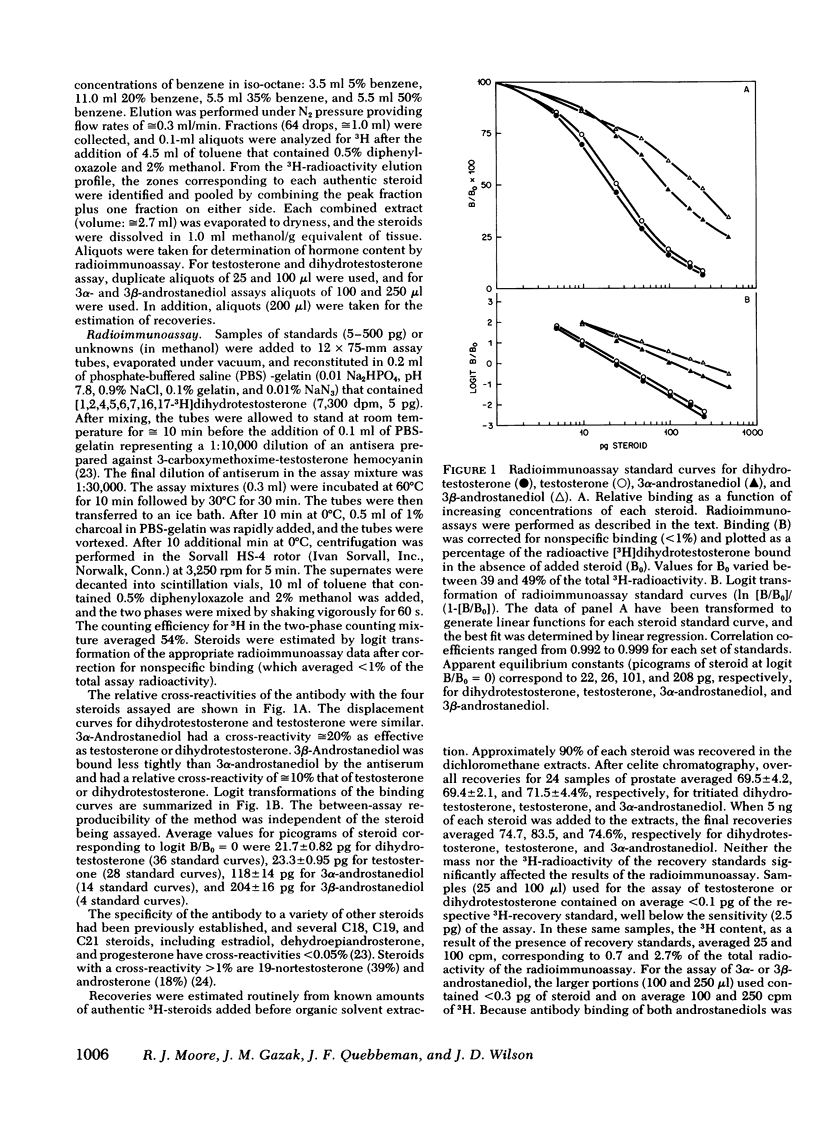
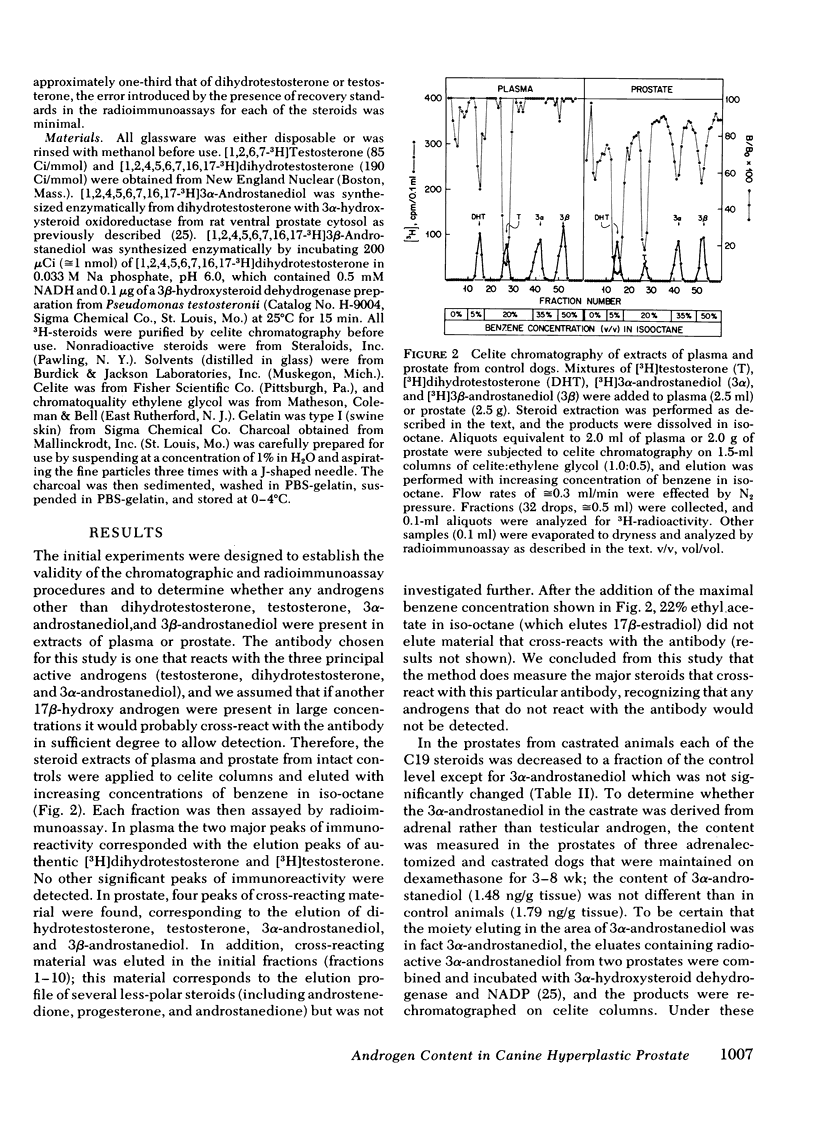
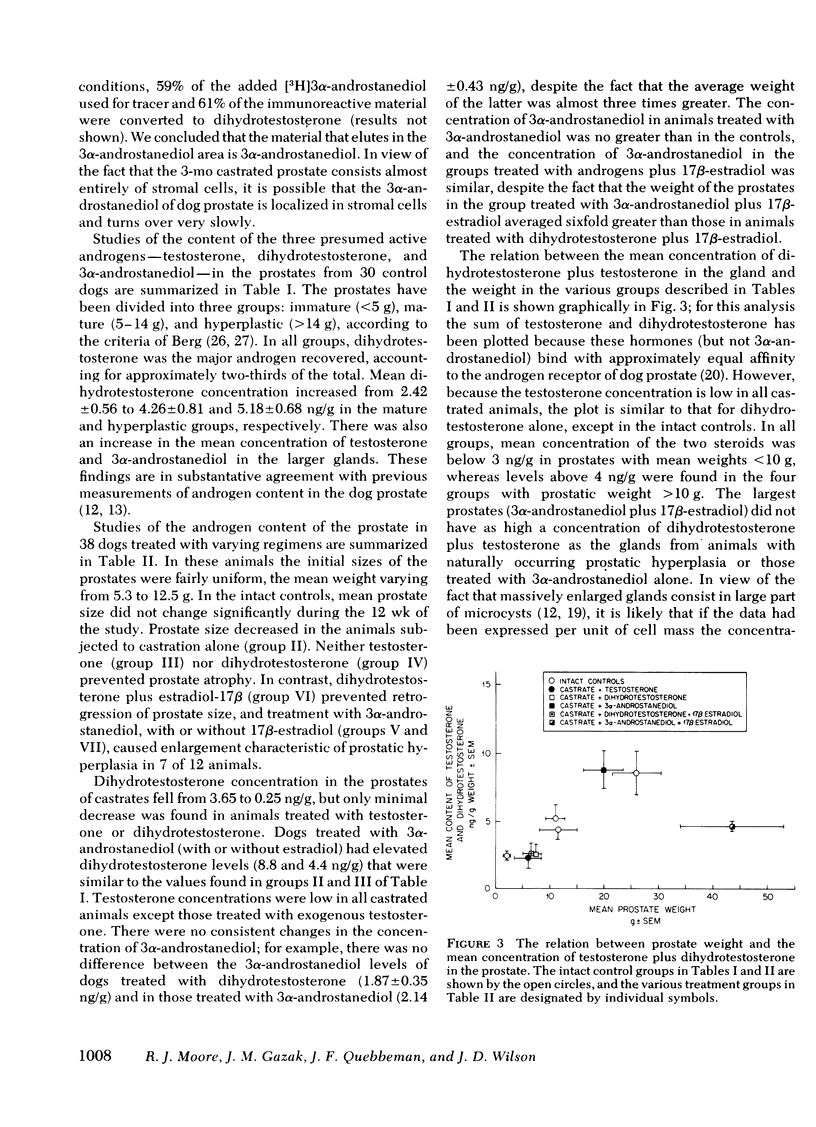
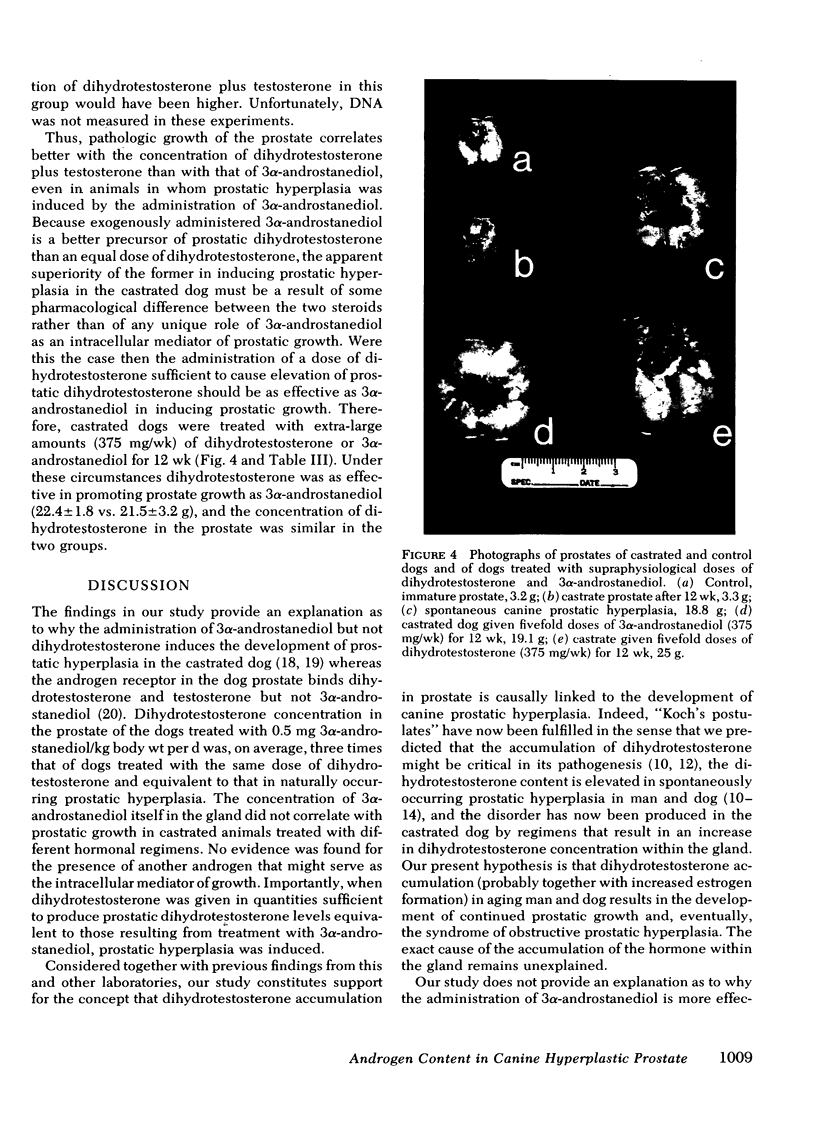
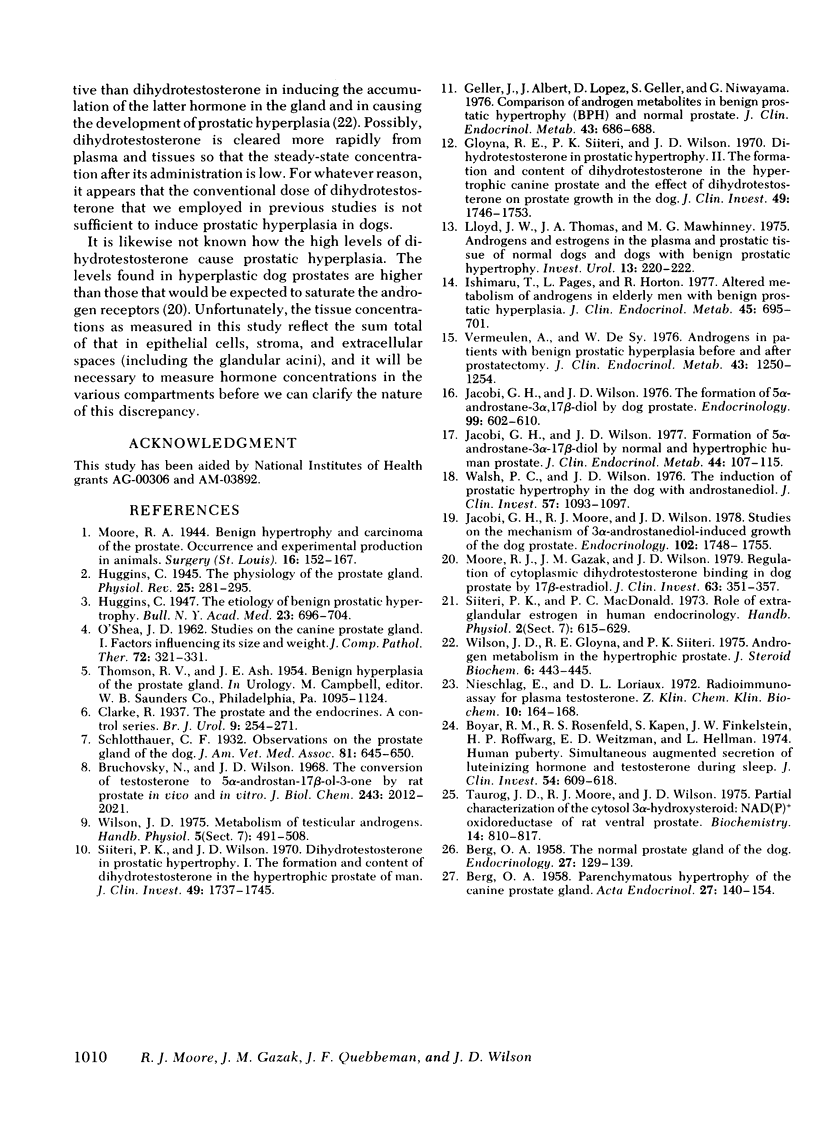
Images in this article
Selected References
These references are in PubMed. This may not be the complete list of references from this article.
- BERG O. A. Parenchymatous hypertrophy of the canine prostate gland. Acta Endocrinol (Copenh) 1958 Feb;27(2):140–154. doi: 10.1530/acta.0.0270140. [DOI] [PubMed] [Google Scholar]
- BERG O. A. The normal prostate gland of the dog. Acta Endocrinol (Copenh) 1958 Feb;27(2):129–139. doi: 10.1530/acta.0.0270129. [DOI] [PubMed] [Google Scholar]
- Boyar R. M., Rosenfeld R. S., Kapen S., Finkelstein J. W., Roffwarg H. P., Weitzman E. D., Hellman L. Human puberty. Simultaneous augmented secretion of luteinizing hormone and testosterone during sleep. J Clin Invest. 1974 Sep;54(3):609–618. doi: 10.1172/JCI107798. [DOI] [PMC free article] [PubMed] [Google Scholar]
- Bruchovsky N., Wilson J. D. The conversion of testosterone to 5-alpha-androstan-17-beta-ol-3-one by rat prostate in vivo and in vitro. J Biol Chem. 1968 Apr 25;243(8):2012–2021. [PubMed] [Google Scholar]
- Geller J., Albert J., Lopez D., Geller S., Niwayama G. Comparison of androgen metabolites in benign prostatic hypertrophy (BPH) and normal prostate. J Clin Endocrinol Metab. 1976 Sep;43(3):686–688. doi: 10.1210/jcem-43-3-686. [DOI] [PubMed] [Google Scholar]
- Gloyna R. E., Siiteri P. K., Wilson J. D. Dihydrotestosterone in prostatic hypertrophy. II. The formation and content of dihydrotestosterone in the hypertrophic canine prostate and the effect of dihydrotestosterone on prostate growth in the dog. J Clin Invest. 1970 Sep;49(9):1746–1753. doi: 10.1172/JCI106392. [DOI] [PMC free article] [PubMed] [Google Scholar]
- Ishimaru T., Pages L., Horton R. Altered metabolism of androgens in elderly men with benign prostatic hyperplasia. J Clin Endocrinol Metab. 1977 Oct;45(4):695–701. doi: 10.1210/jcem-45-4-695. [DOI] [PubMed] [Google Scholar]
- Jacobi G. H., Moore R. J., Wilson J. D. Studies on the mechanism of 3 alpha-androstanediol-induced growth of the dog prostate. Endocrinology. 1978 Jun;102(6):1748–1758. doi: 10.1210/endo-102-6-1748. [DOI] [PubMed] [Google Scholar]
- Jacobi G. H., Wilson J. D. Formation of 5alpha-androstane-3alpha,17beta-diol by normal and hypertrophic human prostate. J Clin Endocrinol Metab. 1977 Jan;44(1):107–115. doi: 10.1210/jcem-44-1-107. [DOI] [PubMed] [Google Scholar]
- Jacobi G. H., Wilson J. D. The formation of 5alpha-androstane-3alpha, 17beta-diol by dog prostate. Endocrinology. 1976 Aug;99(2):602–610. doi: 10.1210/endo-99-2-602. [DOI] [PubMed] [Google Scholar]
- Lloyd J. W., Thomas J. A., Mawhinney M. G. Androgens and estrogens in the plasma and prostatic tissue of normal dogs and dogs with benign prostatic hypertrophy. Invest Urol. 1975 Nov;13(3):220–222. [PubMed] [Google Scholar]
- Moore R. J., Gazak J. M., Wilson J. D. Regulation of cytoplasmic dihydrotestosterone binding in dog prostate by 17 beta-estradiol. J Clin Invest. 1979 Mar;63(3):351–357. doi: 10.1172/JCI109310. [DOI] [PMC free article] [PubMed] [Google Scholar]
- Nieschlag E., Loriaux D. L. Radioimmunoassay for plasma testosterone. Z Klin Chem Klin Biochem. 1972 Apr;10(4):164–168. doi: 10.1515/cclm.1972.10.4.164. [DOI] [PubMed] [Google Scholar]
- O'SHEA J. D. Studies on the canine prostate gland. I. Factors influencing its size and weight. J Comp Pathol. 1962 Jul;72:321–331. doi: 10.1016/s0368-1742(62)80037-x. [DOI] [PubMed] [Google Scholar]
- Siiteri P. K., Wilson J. D. Dihydrotestosterone in prostatic hypertrophy. I. The formation and content of dihydrotestosterone in the hypertrophic prostate of man. J Clin Invest. 1970 Sep;49(9):1737–1745. doi: 10.1172/JCI106391. [DOI] [PMC free article] [PubMed] [Google Scholar]
- Taurog J. D., Moore R. J., Wilson J. D. Partial characterization of the cytosol 3 alpha-hydroxysteroid: NAD(P)+oxidoreductase of rat ventral prostate. Biochemistry. 1975 Feb 25;14(4):810–817. doi: 10.1021/bi00675a026. [DOI] [PubMed] [Google Scholar]
- Vermeulen A., De Sy W. Androgens in patients with benign prostatic hyperplasia before and after prostatectomy. J Clin Endocrinol Metab. 1976 Dec;43(6):1250–1254. doi: 10.1210/jcem-43-6-1250. [DOI] [PubMed] [Google Scholar]
- Walsh P. C., Wilson J. D. The induction of prostatic hypertrophy in the dog with androstanediol. J Clin Invest. 1976 Apr;57(4):1093–1097. doi: 10.1172/JCI108353. [DOI] [PMC free article] [PubMed] [Google Scholar]
- Wilson J. D., Gloyna R. E., Siiteri P. K. Androgen metabolism in the hypertrophic prostate. J Steroid Biochem. 1975 Mar-Apr;6(3-4):443–445. doi: 10.1016/0022-4731(75)90169-7. [DOI] [PubMed] [Google Scholar]



